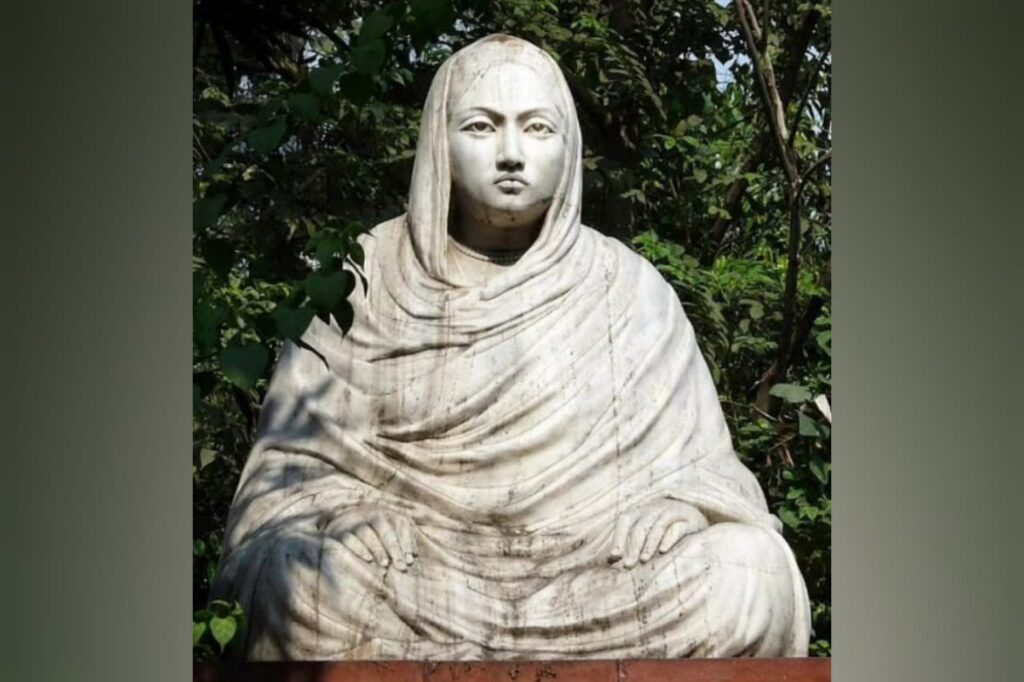Women in our country anyway had little recognition due to the prevailing gender bias, and those who got their due share were indebted to the generational social and cultural capital that they had inherited. These brave and courageous women who had secured independence from colonisers could not snatch their liberty from the garb of intersectional oppression of class, caste and gender.

By Debarati Mitra
New Delhi: When that one week of childhood started with Lata Mangeshkar’s “Aye mere watan ke logon” and a bunch of hyperactive children running with tiny triclours in their hands, we would know it was Independence Week. There would be a fervour in the air- a new current which gave goosebumps whenever we heard patriotic songs. Schools and colleges would be busy preparing dances and songs and plays to honour our motherland. Days have passed faster than we thought they would. To my grandmother, it still feels like yesterday when she had received the newspaper that read that we are free. She was quite taken aback when the TV channels started saying that this is, in fact, the 75th year of our Independence.
The frenzy that surrounds us often fills us with a sense of a duty and love and responsibility to the land that we call our country. It shakes us with the reminder of the sacrifices that people like Gandhi Ji and Nehru had made. They were fighters- sons of the soil who ensured the freedom that we enjoy today. But if we look closely, there are only a handful of names and pictures that surface our mind when we are asked about the freedom struggle. It is almost as if we celebrate the already celebrated freedom fighters, we reiterate the names of those we already know and act like we are in a bubble.
This is not to imply that we should not celebrate these popular names, it is just to indicate that there is seldom a deviation from these mainstream acknowledgements. The farthest we go are to the names of Mangal Pandey or Bhagat Singh- the slightly lesser known names.
When these names are in constant circulation throughout the nation, on a quiet Calcutta lane, the name of a woman shines bright in one corner. She was Rashmoni, or as popularly known, Korunamoyee Rani Rashmoni. The people’s princess of Kolkata, Rashmoni, had humble origins in a fisherman family of Bengal. Her compassion and solidarity towards the fishermen and the subaltern, in general, gained her the title of ‘Rani’ or “Karunamoyee Rani Rashmoni”.
A teenager who was married to a wealthy zamindar family of Jaan Bazaar, soon gained education due to the immense support of her husband, Raj Chandra Das. A fast learner and a very capable mind, Rashmoni soon became the partner of her husband’s business ventures. Most of their earnings went into aiding the poor- from kitchens for the downtrodden to building water stations for the poor.
After becoming a widow at an early age in 1830, she single handedly took care and made her business flourish, while also raising four daughters and battling misogyny. Her wealth and the absence of a man were pivotal reasons for the East India Company and her husband’s adversaries trying to take over their business. The parties were surprised to find the wits and pragmatism of the lady when she handled the business with elegance and the help of Mathura Nath Biswas, her son-in-law.
She was one of the most active members of social reforms in Bengal and even submitted a plea against polygamy to the Company. A highly functioning reformer, she protested against the social barriers of the time like Sati, child marriage and atrocities against lower caste poeple.
She was the first Dalit woman to have established a temple in the heart of bengal- the Dakshineswar Kali Temple. Other than the temple, she, along with her husband built two of kolkata’s oldest Ghats- the Ahiritola Ghat and Babughat, which are still one of the busiests in the city.
At every stage, this fierce woman, clad in white, made sure that the Motherland gets saved from the atrocities of the Whites. The young widow, although forgotten by the nation, remained in the hearts of the people of Bengal. Yet, she never gained her true appreciation because the Bhodrolok culture of Bengal deemed the invisibilisation of Dalit women much more important than mobilising the people from minority communities. Caste and class hegemony percolated into the freedom politics of the yesteryears.
Women in our country anyway had little recognition due to the prevailing gender bias, and those who got their due share were indebted to the generational social and cultural capital that they had inherited. These brave and courageous women who had secured independence from colonisers could not snatch their liberty from the garb of intersectional oppression of class, caste and gender.
Our whitewashed history textbooks coupled with societal bias have able handedly erased the names of people hailing from the margins- identities who had played a role that was equal, if not more, to the ones who are already mentioned in golden letters in the story of struggle for freedom. Many other women like Rani Rashmoni live in the memories of the local people and are unknown to the rest of the nation. We will truly celebrate Azadi ka Amrit Mahotsav the day our citizens know the names of these unknown heroes, hear their voices and tell their stories with the same spirit that they tell the stories of others with.

(The author is a third year Sociology honours student at Maitreyi College, University of Delhi.)
